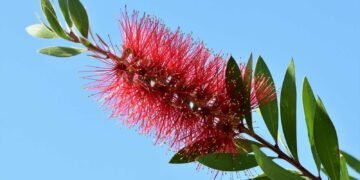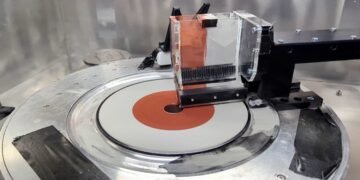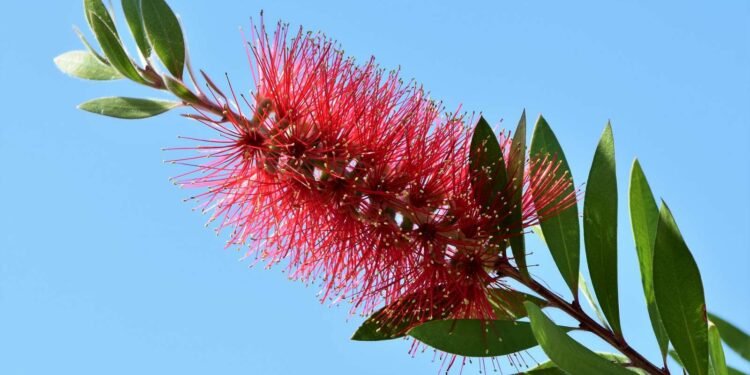New Printable, Injectable Materials for Advanced Medical Applications
A team of researchers led by the University of Sydney have partnered with Korea’s Yonsei University to create a new class of gels for advanced medical applications
An international team of researchers led by the University of Sydney has been joined by Korea’s Yonsei University to develop a new type of hydrogel materials that could revolutionise the way we deliver medicines and support patients recovering from surgery.
“The possibilities for what we can do by combining highly branched macromolecules with hydrogels are really exciting,” said Associate Professor Markus Müllner, an ARC Future Fellow at the School of Chemistry and Sydney Nano Institute member researching polymers at the nano-scale.
Hydrogels are made from body-safe polymer networks that can absorb and be moulded into various shapes. They’re found in everyday products from cosmetics to contact lenses and medical supplies. For example, modern hydrogel lenses replace early generations of rigid lenses that were scratchy and prevented oxygen from reaching the eye, leaving wearers’ eyes tired and sore.
The ability for hydrogel lenses fit to the wearer’s eyes better and “breathe” better makes the lenses significantly more comfortable for wearers and showcases how custom designing these materials increases their potential for use in biomedical applications.
“Larger hydrogel structures like wound dressings have been incredibly helpful for millions of people. Now we’re creating microscopic structures inspired by nature that can support tissue growth or deliver targeted medications which could significantly improve patient outcomes for surgical procedures.”
Inspiration from nature
Bottlebrushes are an iconic Australian native flower that have inspired a new generation of nanomaterials – creating building blocks for advanced drug delivery systems, capable of delivering targeted medications around the body, potentially taking chemotherapy drugs directly to the cancer cells they need to fight.
Associate Professor Müllner has been one of the first researcher to demonstrate the usefulness and potential of bottlebrush polymers for nanomedicine.
Taking further design cues from the bottlebrush flower, the team is developing a hydrogel with network made from nanoscale bottlebrush polymers.

Targeted cancer drug delivery
As the team described in a recent publication, the brushy structure is useful in creating difficult-to-achieve materials via simple self-assembly, and further enables the loading of cytotoxic drugs that can be released controllably for example in the acidic environment created by the cancer.
“This changes the properties of the material which had protected the medication so that it can begin to work directly at the site where it’s needed without affecting healthy cells. This form of targeted drug delivery could pave the way for more effective treatments with fewer side effects for patients,” Associate Professor Müllner said.
Scalpel-free surgery
The team is looking at more than just flowers for inspiration.
“Inside our joints, there are structures made of cartilage that help cushion heavy impacts and allow us to move with strength and flexibility. These can wear down as we age, leading to pain and even disability.
“We can design hydrogels to support or replace damaged cartilage – giving people back their pain-free movement. Because these gels react to the environment inside the body to transform into their final structure, we can even inject the gels and closely mould them to the bones, ligaments and muscles to provide a better fit than with current surgical options – all without having to pick up a scalpel.”
This could drastically improve the quality of life for the 1.71 billion people globally who suffer from osteoarthitis conditions.
Hydrogels could also be used as a scaffold for the body’s natural healing processes – providing a structure to guide scar tissue growth and speed up recovery from trauma or surgery. The same scaffolds could also be used to support collagen growth and muscle development following reconstructive or cosmetic surgery, helping the body adjust to its new shape faster and with better function.
Supporting lab-grown organs
“We are also investigating using hydrogels to support organoids, which are tissues grown in the lab from a patient’s own cells that could replace the function of a damaged organ.
“By using hydrogels to protect and support these organoids as they become established within the body, and then having the gels dissolve naturally over time, we can begin to explore ways to make transplant procedures more successful and reduce the risk from follow up surgeries to remove stents, stitches or other artificial support structures.”

Collaborating with Korea
Associate Professor Müllner’s expertise in nanoscience and polymer development is world-renowned, and in 2022 caught the attention of Professor Byeong-Su Kim, at Korea’s leading Yonsei University, who proposed a research collaboration to develop hydrogels together.
“I jumped at the opportunity because Yonsei is another leader in polymer development, so this was a great opportunity to learn from their expertise and make use of our combined strengths,” said Associate Professor Müllner.
The University of Sydney has been a strategic partner with Yonsei University for 10 years, funding 25 joint projects supported by the matched funding from both universities. Yonsei University is a global leader in technological innovation with a strong history of successful research collaboration with Sydney.
Professor Byeong-su Kim said: “We greatly appreciate the opportunity to collaborate with Professor Müllner group at the University of Sydney. Their expertise in nanostructured materials complements our strength in the design and synthesis of biocompatible polymer systems. By combining our respective expertise, we believe this partnership will contribute meaningfully to the advancement of next-generation biomedical materials and therapies.”
The partnership was supported through a University of Sydney-Yonsei partnership collaboration award in 2022. The award is one of the seed funding programs established by the Office of Global and Research Engagement (OGRE) at the University of Sydney to facilitate and support joint initiatives with partner universities. These programs aim to foster multi-disciplinary, cutting-edge research that generates significant academic and societal impact, and has helped the team secure further grants including the Australian Government’s Global Science and Technology Diplomacy Fund (GSTDF), a highly competitive scheme for international research collaborations.
What lies ahead
The Sydney-Yonsei partnership has now expanded to connect academics at QUT and UNSW, and Brisbane-based biomedical company Gelomics to further develop the team’s findings.
“The hydrogel scaffolds we’re producing will be adjustable to match the different use cases we’ve explored – meaning they can be rigid if needed or bend, flex and compress to match what the body is doing around the hydrogel, all while delivering medications and supporting healing.”
“While we’re still a few years off a commercial product, the materials we create in this project will be designed to be compatible with 3D printing applications – an emerging way of creating new materials to produce structures that are impossible to achieve using current industrial processes. This flexible and scalable method of manufacturing opens up a whole new world of being able to get medical devices to people in need around the world and at unprecedented scale.”
Provided by: University of Sydney





































